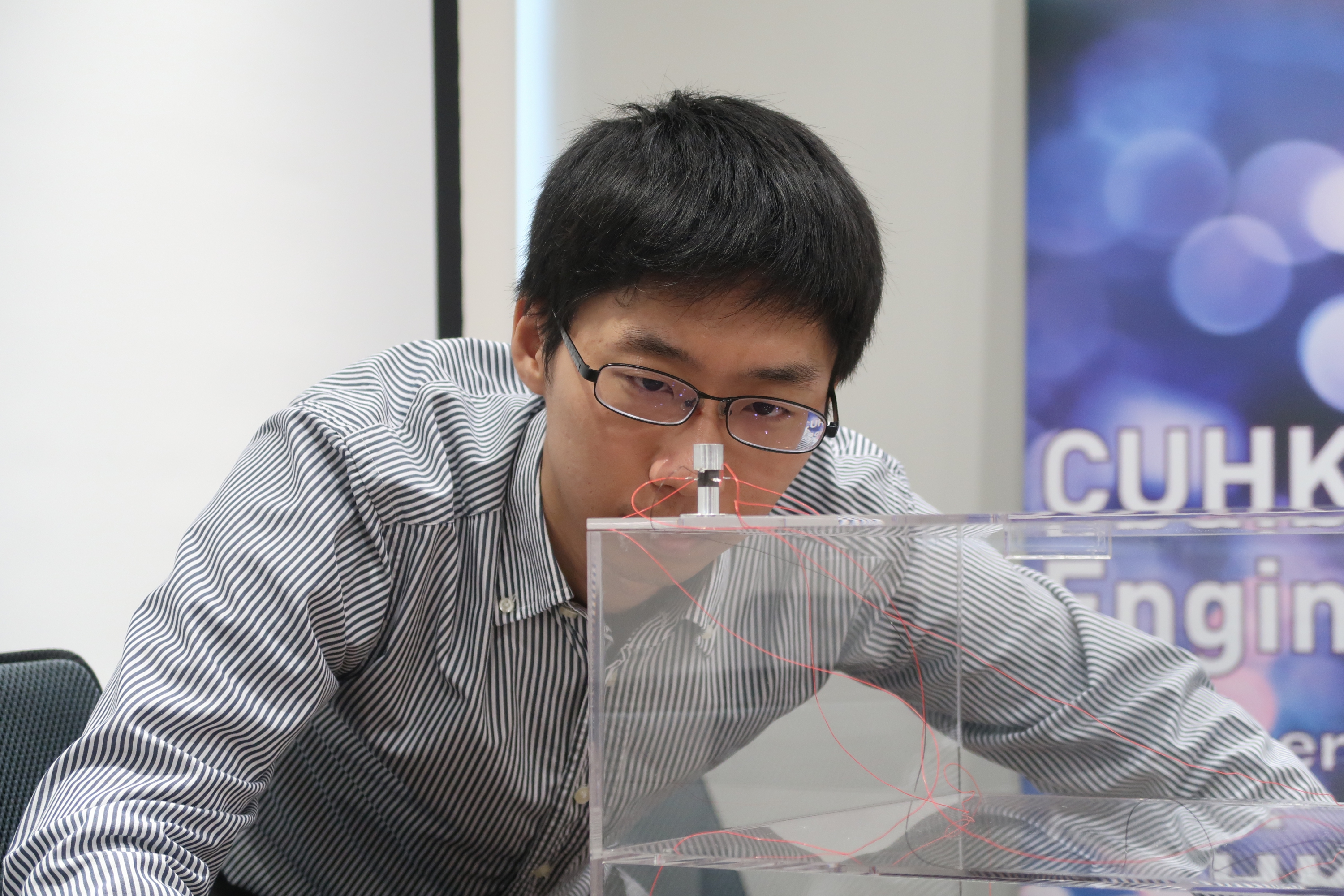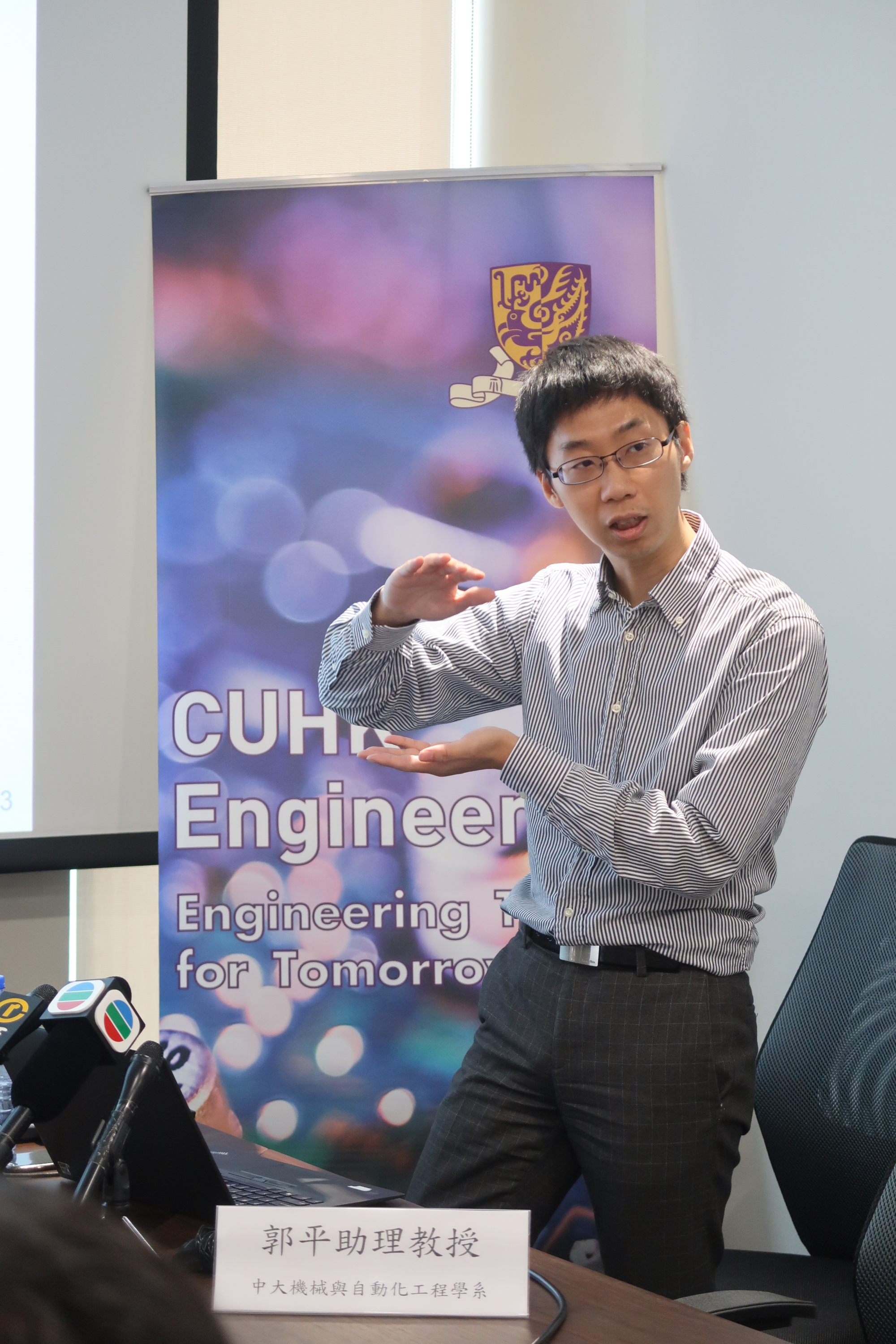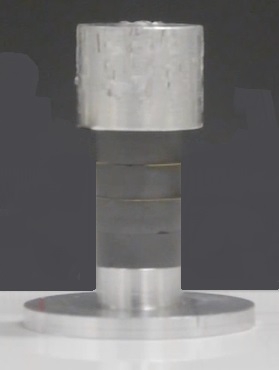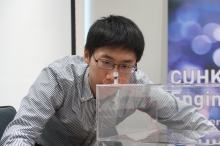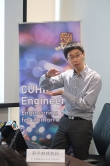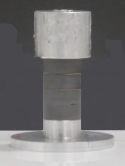CUHK
News Centre
CUHK Develops Self-Running and Self-Floating Levitation ActuatorUses Principle of Near-Field Acoustic Levitation to Develop Levitating Transport of Future
Prof. GUO Ping, Assistant Professor from the Department of Mechanical and Automation Engineering at The Chinese University of Hong Kong (CUHK), and his research team, have developed a self-running and self-floating two-dimensional actuator, by applying near-field acoustic levitation. It can be used for transportation and also for laser processing and flaw detection.
The design of this actuator is simple. It overcomes the problem of high power consumption. It casts off the limitation of existing magnetic levitation technology which needs track for movement. This is a novel technology which brings a breakthrough for high-precision machine tools and mobile robots. With this technology, the hoverboard, which appeared in the 1980’s science fiction movie “Back to the Future II”, could go from fiction to fact in the near future.
At present, there are two main kinds of non-contact actuators: air bearings and magnetic levitation bearings. They are widely employed in precision machine-tools, nanotechnology, and metrology and by industry’s research and development sectors. Although they can meet the need for high precision, negligible friction and wear, they have many constraints. For instance, they are of complex design incurring high cost, they suffer from a limited travel range, electromagnetic interference affecting the operation, and undesirable noise, and they require clean air.
To tackle these problems, the CUHK team led by Professor GUO, focused on research on acoustic radiation force in the near-field of a vibrating source to design a novel self-floating levitation actuator. The team developed a device which adopts a single piezoelectric element to achieve two vibration modes with an identical frequency to create elliptical vibration of the structure, which can provide vertical levitation force as well as the propulsion force. From this, the actuator realizes non-contact motion. It can levitate and move over an ordinary flat surface, like a magic carpet.
Non-contact actuators are cutting-edge technologies in metrology, machine-tools, and hover cars, while the technology of near-field acoustic levitation leads to a new phase. Unlike air bearings and magnetic levitation bearings, the structure of near-field acoustic levitation is simple, immune to electromagnetic interference, quiet in operation and low in power consumption. In other words, it can travel further at lower cost. Users can adjust the vibration frequency to control the actuator to follow any specified path. It is flexible and can be used in wide range of applications.
Professor GUO said, ‘After multiple experiments, we demonstrated that our actuator can reach the speed of 2.5 cm/s or faster and is capable of transporting an object weighing 200 g. The power consumption is only 1.2W, which is about that of a small light bulb. We are striving to improve it. Eventually, this technology is capable of being applied to transportation, such as a hoverboard.’ This technology is also applicable to precision machining and precision driving, including laser processing with large dimension scale, and to non-contact material transportation on highly cleaned and fragile surfaces, and non-contact flaw detection for the workplace.
Demonstrating 12 innovative projects at the InnoCarnival 2017
CUHK will participate in the InnoCarnival 2017, organized by the Innovation and Technology Commission of the Hong Kong Special Administrative Region Government, from 21 to 29 October at the Hong Kong Science Park. Members of the public are welcome to visit CUHK’s booth (No. F06) to learn more about the self-running and self-floating levitation actuator and see another 11 innovative projects. Interactive games are also available.
|
Date: |
21 to 29 October 2017 |
|
Time: |
10:00 am to 7:00 pm (Sat. & Sun.); |
|
Venue: |
F06, Convention Centre 3, 1/F., 12W, Phase 3, |
Website of InnoCarnival 2017: http://www.itm.gov.hk/
Innovation at CUHK
CUHK is recognized as the most innovative university in Hong Kong and ranks 27th in the Asia-Pacific region by the latest ‘Reuters: Asia Pacific’s Most Innovative Universities’ listing. The University currently has more than 750 granted patents in different jurisdictions worldwide. Many of these patents have been licensed to relevant industries that help bring these innovations to the market to benefit society. In academic year 2016-17, CUHK has received 88 granted patents and filed 183 patent applications for inventions developed in the areas of medical technology, biotechnology, information technology, telecommunications, and materials science.
The levitation actuator applying near-field acoustic levitation, developed by Prof. Guo Ping, can move in any plain surface. It casts off the limitation of existing magnetic and air levitation technology which needs track for movement.


